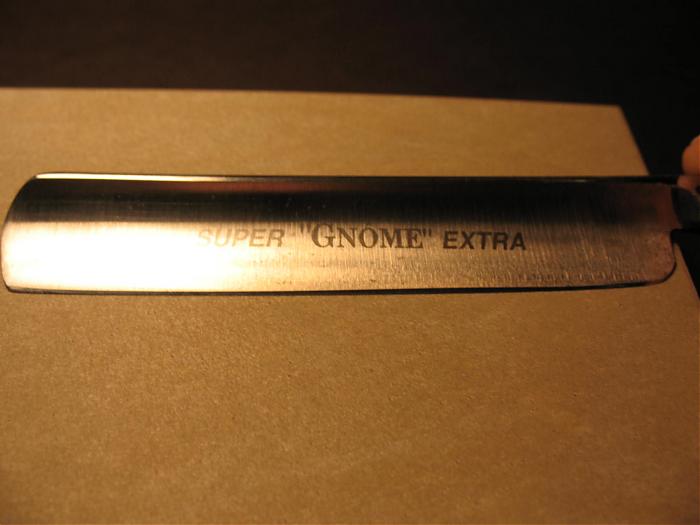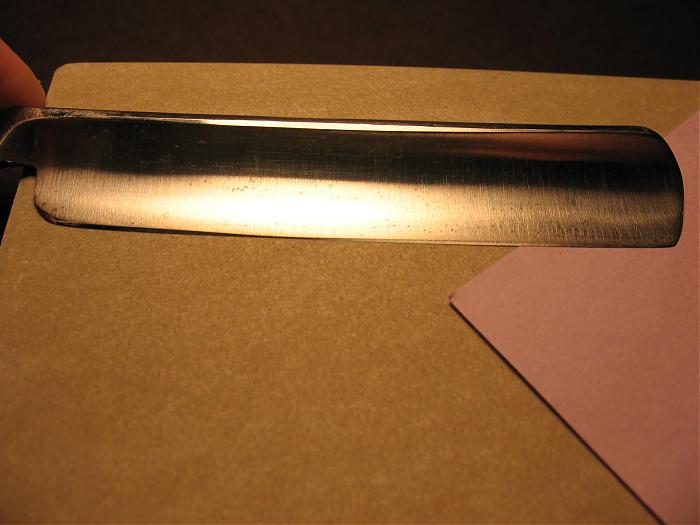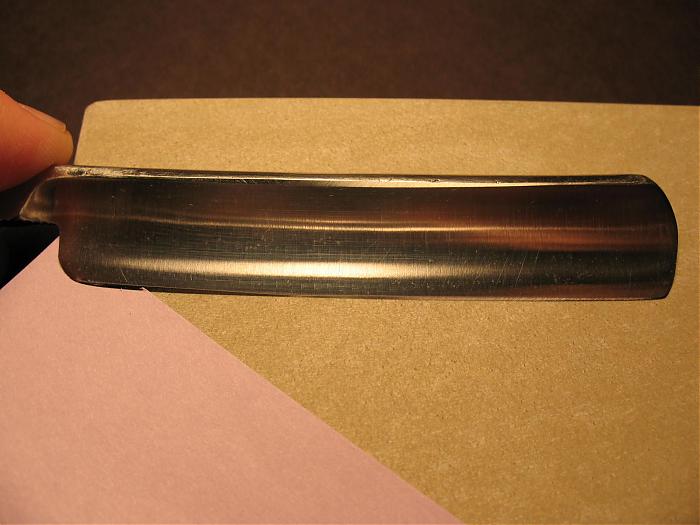Results 1 to 10 of 10
Thread: Good pre-honing warpage test
Threaded View
-
02-09-2008, 04:57 AM #1
 Good pre-honing warpage test
Good pre-honing warpage test
The marker test is great to use for diagnosing exact abnormalities in edge flatness that would then commonly require more advanced honing techniques.
Here is an easy test I use when I first get a razor to get a quick idea of what kind of honing I'll have to get into; again, the marker test is much more precise, but is used when honing rather than prior to honing.

Sure, pretty self explanatory, but lay the blade on a flat surface (hopefully your hone is such a surface! ). A significantly warped blade will be easy to spot on the side of this side of the blade (what I call the "front" side or etch/wash side). Now it's not possible to see this great view of the edge when you use your same hand and just flip the blade so.....
). A significantly warped blade will be easy to spot on the side of this side of the blade (what I call the "front" side or etch/wash side). Now it's not possible to see this great view of the edge when you use your same hand and just flip the blade so.....

swap hands. The edge still faces you looking at the other side of the blade. And on this razor.....what this? Spine must be off. This edge is not flat on the "back" side of the blade. Using only the weight of the blade, no or virtually no pressure, etc. would get nothing except frustration and time wasted on this razor since close to 50% of the edge on this one side is not making contact with the hone. A very narrow hone would probably accommodate the faulty contours of this razor and others like it, but I don't currently have a narrow hones.

Heel on that same side is not flat either. No wonder this new TI just can't seem to get sharp with the traditional "text book" method of honing.
A fair amount of the new Wapis I've purchased (3 our of 8) exhibit this type of behavior (edge flat on one side of the blade, not on the other).
This test has worked for me to give me a "first impression" of how a blade is before I start honing. I do have razors that are flat on both sides, razors that I can't slip a piece of paper under while on they're laying flat on the hone. I like those razors better.


 LinkBack URL
LinkBack URL About LinkBacks
About LinkBacks







 Reply With Quote
Reply With Quote